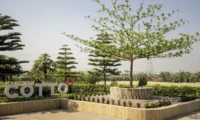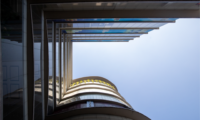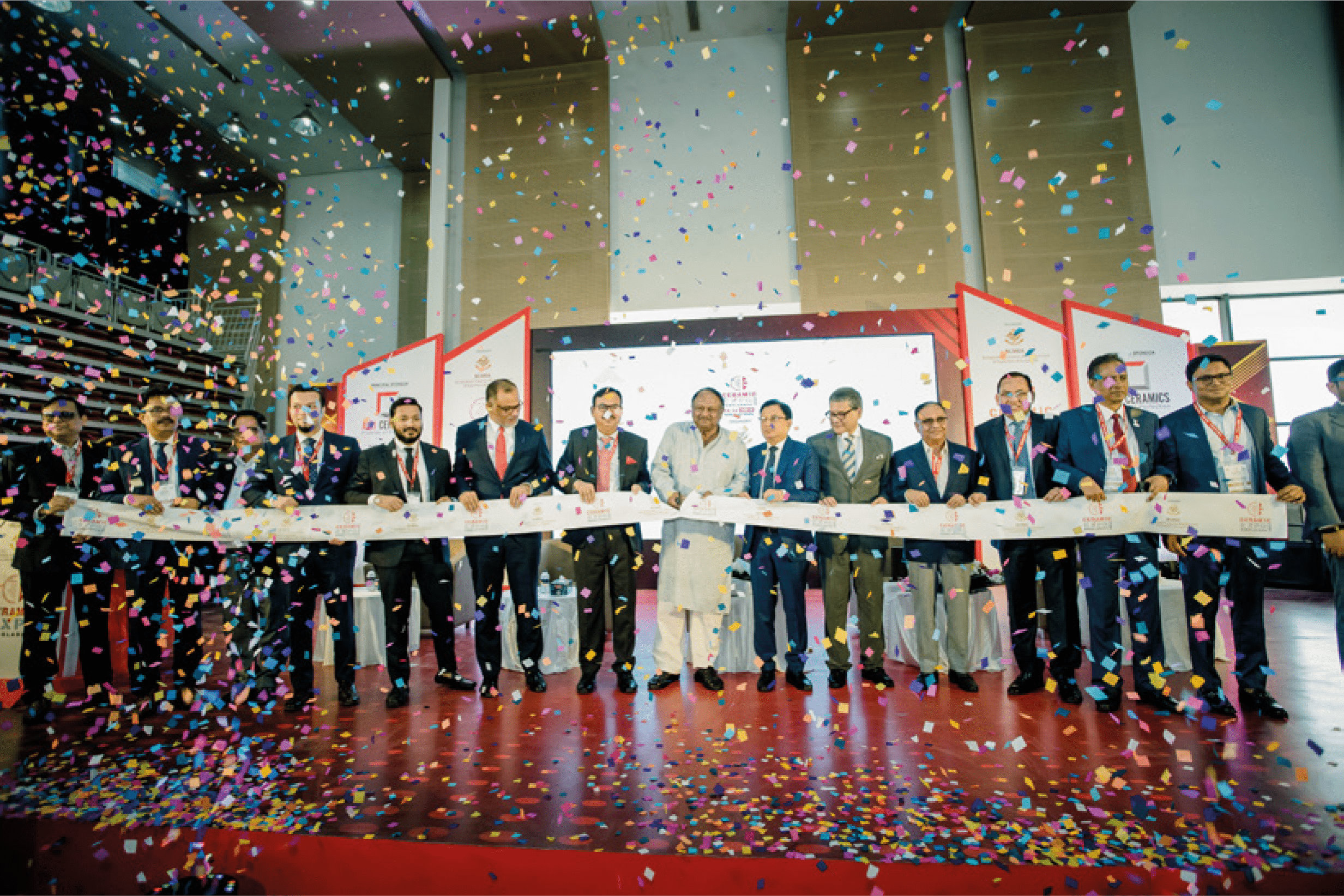
In today’s globalised world, trade is considered the lifeline of a nation. Not only does it contribute to flourishing an economy, but it a so allows cultural integration promoting enrichment and development at both micro and macro level. It allows for technology transfer, presenting the nations lagging behind with opportunity to gain momentum for attaining growth.

And the global community acknowledging its significance and impact has devised various tactics to encourage trade. To this end, international exhibitions have proved to be one of the most fruitful approaches time and again. The international community lauds and celebrates such exhibitions that bring industrialists from different corners of the globe onto a common platform, for a common purpose, promoting trade.
In Bangladesh, the ceramic industry is one of the burgeoning manufacturing sectors. As the country experiences steady economic growth and urbanisation, the local demand for ceramic products too continues to grow. Catering to 75 per cent of the local demand, the sector also exports quality products to many countries, thanks to its exquisite designs and multifarious functionalities. The industry has seen production growth of 200 per cent in the past 10 years. The growth trend is an indication of the industry’s potential to be one of the top foreign exchange earners in the country. The total investment, both local and international, in the sector is about US$1.58 billion with tiles accounting for
62 per cent, tableware 23 per cent and sanitaryware 15 per cent of the share respectively. The ceramic sector has made a significant contribution to the country’s GDP with exports worth over US$50 million in the 2020-21 fiscal year. Even though this export level is owed to the high-quality products manufactured here in Bangladesh, it is also owing to the flexibility in Minimum Order Quantity, capability to export in bulks and the GSP facilities that Bangladesh enjoys.
The industry has seen production growth of 200 per cent in the past 10 years. The total investment, both local and international, in the sector is about US$1.58 billion with exports worth over US$50 million in the fiscal year 2020-21.
Bangladesh ceramics have touched the lives of many high-profile users. It has carved its place in the Buckingham Palace of the Great Britain, the British Parliament, the Presidential Palaces of India and Pakistan, the Royal Palace of Bhutan and many more.
Our global buyers from different parts of the world are:
USA: Crate&Barrel, Libbey, Pottery Barn, Williams-Sonoma, Michael Aram, 10 Strawberry Street
UK: Royal Doulton, Wedgwood, Portmeirion Group, Rosenthal, Goodfellows, Churchill, waitrose, Sophie Conran, Jersey Pottery, John Lewis
EUROPE: ZARA Home, Monoprix, Villeroy & Boch, XXXLUTZ, loria, Rosendahl, LPP, Habitat, Taitu, H&M, Kasanova, Migros, Schonhuber Franchi
Asia: Noritake, Good Earth, DLF, ICA, Pure, Westside, INV Home
Currently Bangladesh exports to over 50 countries, which are: The USA, Canada, the UK, Germany, France, Italy, Sweden, Switzerland, Norway, Greece, Ireland, the Netherlands, Spain, Austria, Belgium, Denmark, Finland, Poland, Australia, New Zealand, Japan, Russian Federation, the UAE, Saudi Arabia, Kuwait, Egypt, Libya, Turkey, Jordan, Iran, Qatar, Oman, Syria, Lebanon, Pakistan, Sri Lanka, Nepal, India, the Maldives, Taiwan, Malaysia, Singapore, Brunei, Myanmar, Thailand, Indonesia, Argentina, Chili, Peru, Colombia, and Brazil.
Bangladesh is exploring beyond the traditional usage of ceramics and tapping into a much wider array of applications, namely Advanced Ceramics. The value-added features of Advanced Ceramics allow it to be used to address issues like energy conservation, water purification, electronic and biomedical applications. Companies and universities are coming together getting deep into research and development to explore the potential of advanced ceramics as global market for these products is experiencing a high growth momentum which comes as an opportunity for the ceramics community. But to make use of this, it is essential to be exposec to the modern cutting-edge technologies used in production It is important to transfer technology on a global scale to meet the burgeoning demand for ceramics in all its forms. And to promote technology transfer and improve global trade performance, several international ceramic expos are held around the world.
Advanced ceramics is also being manufactured on a mass scale which has a lot of potential not only in the markets but also in the lives of people.
The 3rd edition of the state-of-the-art international trade fair and B2B platform for ceramic industries around the world, Ceramic Expo Bangladesh-2022 is scheduled to take place from 24-26 November 2022. This year the expo will be bigger and cover four halls of International Convention City Bashundhara (ICCBI on Purbachal Expressway, Dhaka. Living up to its motto ‘Gateway to Explore Ceramics World’, the Ceramic Expo offers just that to the industry. It attracts an impressive gathering of international manufacturers, suppliers, experts and delegates promoting trade. This year the expo will host 120 exhibitors from 20 countries who will showcase their finest ceramic products and top-tier technology emerging in the world of ceramics. Some 200 hosted buyers and 150 brands from both home and abroad will participate and about 500 delegates are expected to join from different parts of the world. Industry leaders like Akij, Sheltech, DBL, Stella, Mir, DLT, SACMI, CBC, Shinepukur, FARR, ABG, Astral, Bridge Chemie, Foshan, Floorex, Modena Technology, Monte Bianco, NJC, and Torrecid will showcase tiles, sanitaryware, tableware, advanced ceramics and machinery. There will be multiple insightful seminars and B2B meetings among local and international delegates on the advancement and potential of ceramics globally.
In the next five years, about 20 new companies are in the pipeline to be introduced to this rapidly growing sector. Export is predicted to rise up to around US$100 million and investment will grow to become US$1.0 billion.
The future of the ceramic sector in Bangladesh looks very promising in the coming years. Special investment is being made to enhance the skill-set of the workers involved in the ceramic sector. The use of modern technology also keeps on growing and so does the procurement of quality raw materials. Advanced ceramics is also being manufactured on a mass scale which has a lot of potential not only in the markets but also in the lives of people. In the next five years, about 20 new companies are in the pipeline to be introduced to this rapidly growing sector. Export is predicted to rise up to around US$100 million and investment will grow to become US$1.0 billion. We wish to achieve this ambitious goal with certainty and serve people all around the world with quality ceramic products made in Bangladesh.







